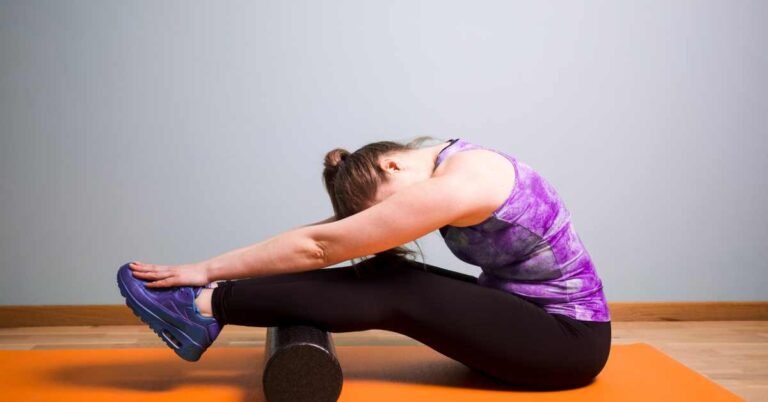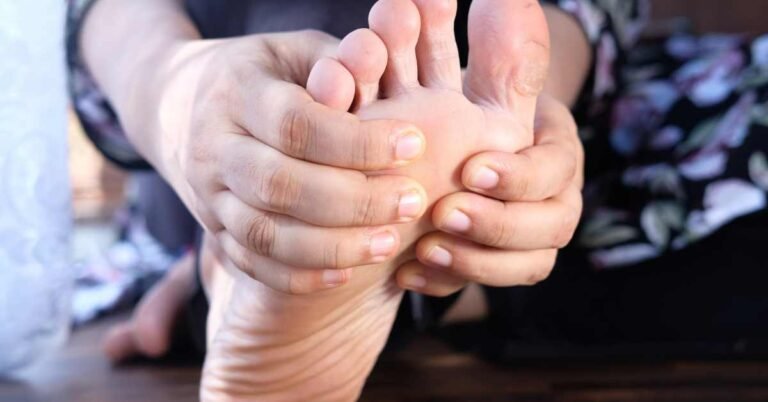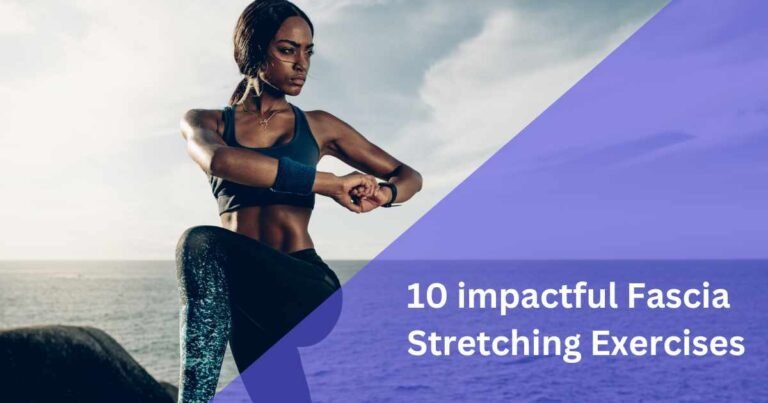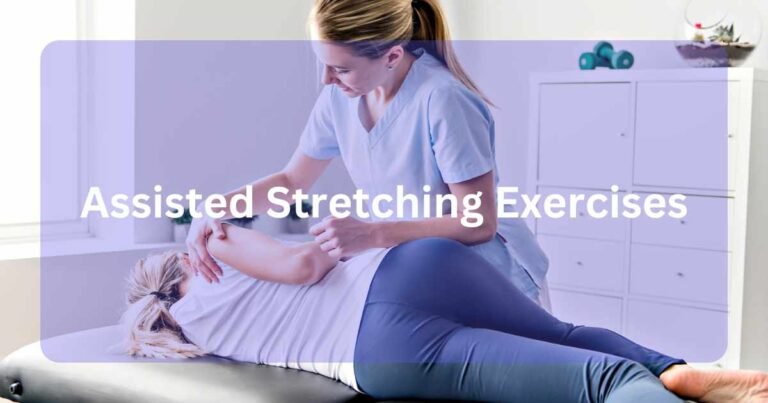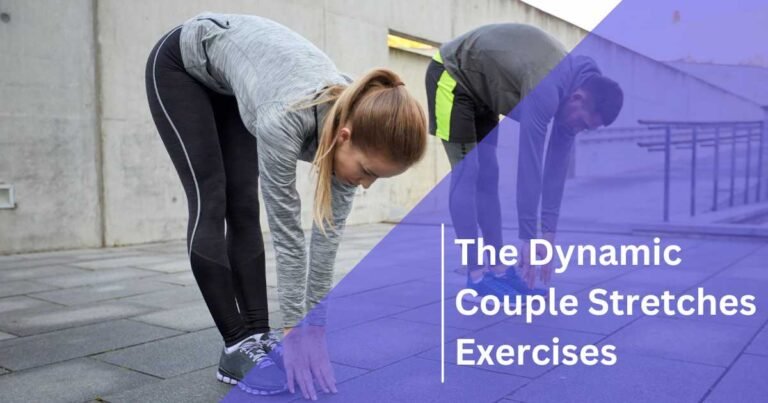Introduction
The assisted stretching exercises are helped by a professional or expert for doing these exercises.
In this post, you’ll learn how to do these exercises at home with equipment, partners, and with the help of online resources.
It also explains in-depth knowledge of how to perform these exercises with assistance.
You’ll also learn to set a routine to improve your experience and understanding. Now, let’s get started.
Understanding Assisted Stretch Therapy
Assisted Stretch Therapy, also known as assisted stretching exercises, is the process that involves the implementation of a guiding professional to assist individuals in consciously doing stretching exercises. It is not just a matter of grabbing your foot and pulling; it is a skill that increases flexibility, mobility, and overall wellness.
The assistance provided in such therapy may be beneficial depending on the person’s unique conditions and desires. A certified therapist may use belly massage, light touch, or particular devices such as belts or tables for stretching.
The positive effects of assisted stretching exercise therapy are very comprehensive. Furthermore, it stops injuries since it increases the muscle’s length and the joint’s motion. It is a solid point for athletes or anyone involved in physically intensive activities who is likely to cause muscle sprain or injury. Similarly, it increases athletic performance by improving muscle work, which results in better agility, power, and overall athletic ability.
Assisted Stretching Exercises at Home:
Have you ever wondered how you could combine the immense benefits of assisted stretching exercises with the comfort of your own home? Then, it is even easier than you might have imagined. While professional therapy provides targeted guidance, you can experiment with many DIY methods at home to get similar results.
Partner Stretching: Get your friend or a family member to give you a hand with the stretching.
Partnering with one willing person, you can repeat the stretch techniques in professional clinics.
It gives rise to team spirit while, at the same time, providing for on-the-spot corrections and adjustments.
Using Tools for Stretch: The tools are also considered when using them to stretch. A chair or bench can be used as a counter to stretch the legs or balance the standing hamstring stretches.
You can gain additional stretch depth with a belt or towel that provides power. It allows you to reach those unreachable areas.
Resistance Bands: Using resistance bands in your home-assisted stretching exercise routine could add a new, challenging, and effective dimension.
They can provide more assistance with assisted stretching exercises and serve as an underling with hip flexor stretches by providing resistance to your movements.
It should be noted that resistance bands are an important tool. They can train the body by changing the resistance and targeting different muscle groups.
Online Resources: Stretching programs with the guidance of real trainers and illustrated with detailed explanations are much on the internet.
There are many resources, such as YouTube videos and mobile apps, where you can find as many resources as possible that offer detailed instructions on assisted stretching exercises.
Try different styles and teachers to discover which one works oppositely to yours.
Adjust with body condition: Adjusting the body’s behaviours and moving slowly is necessary.
Do not go overboard or do stretches that make you uncomfortable or hurt. Take it slow in the beginning. As you become more flexible, you can increase the intensity and duration of your stretches.
Assisted Stretching Exercises for the Whole Body:
In terms of assisted stretching exercises, it is necessary to be accurate.
We should know which parts of the body we aim to activate.
It also maximizes the impact of stretching and achieves proper flexibility and mobility.
Many types of assisted stretching exercises are performed using devices for different body parts.
Let us walk through many smooth examples that will lead you to learn flexibility and unlock flexibility in every corner of your body.
Upper Body:
Neck and Shoulders:
Preparation: Assume a comfortable seated or standing position with proper alignment.
Assistance: If you have a partner or trainer helping you, they can softly direct your movements and offer a little support. You can use your hands for support if you do this stretch alone.
Neck Stretch:
- Be in a position of sitting or standing upright with your shoulders relaxed.
- Gradually lean your head to one side with your ear toward your shoulder until you feel a slight stretch on your neck.
- The assistant will gradually use their hand on the opposite side to apply pressure slowly to intensify the stretch as required but not pull too hard.
- Count to 15 or 30 seconds while deep breathing. Repeat the other side.

Shoulder Stretch:
- Carry a hand over your body at shoulder level.
- With your other hand, press gently on the elbow of the arm extended outwards, pulling it in towards the chest until you feel a stretch in the shoulder.
- Maintain the stretch for 15-30 seconds, and breathe deeply.
- Do the same on the opposite side.
Repetition and Duration: Strive to repeat every stretch 2-3 times on each side, increasing the length of each stretch as your flexibility progresses.
Arms and Chest:
Preparation: Get an appropriate sitting or standing position with a good posture.
Assistance: A partner or a trainer will help you move gently and offer support. Folks who carry out these stretches alone can use wall or object aid.
Arm Stretch:
- Stretch an arm right through your chest at the level of the shoulder.
- Press lightly on the elbow of the outstretched arm with your other hand until the muscles around your shoulder and chest are stretched, or ask your assistant for help.
- Maintain this position for 15 to 30 seconds; the breathing should be deep. Do it on the opposite arm.
Chest Stretch:
- Stand straight with your legs and hips apart.
- Cross your wrists behind your back, palm in.
- Straighten your arms softly and move them forward from your chest to feel them stretching into your shoulders and chest.
- Maintain the stretch position for 15-30 seconds, taking deep breaths. Let go and do it again if necessary.
Back Stretch: Rest in a position to sit on the floor with your legs extended in front of you and then lean forward, seeking to reach for your toes.
Guide yourself by standing straight and having your back stretch in straight lines. You should be able to feel the stretching between your chest.
Try inhaling through your mouth, filling up your lungs, and exhaling through your mouth.
Lower Body:
Assisted Hamstring Stretch:
Preparation: Set up a place to lie where you are comfortable and there is no surface deflection, i.e., the room is carpeted, or you can use a yoga mat. You need to check yourself to see enough for your feet.
Starting Position: In the starting position, you have to lie on your back with both legs extended straight forward from you. Keep your arms always on loosened sides.
Assistance: When your partner is the person assisting you in assisted stretching exercises, they will monitor your position by standing at the end of the mat. You can use towels or a resistance band alone when performing this mission.

Assisted stretching exercises for Quadriceps:
Preparation: Find an area where you can easily take out a smaller cushion or mat and lie on your side comfortably.
Starting Position: First, go to the edge of a bed and lie on one side, with your knee of the bottom leg bent and the top leg straight.
Assistance: As you work out, the balancer guard will stand behind you to help you balance. If you’re working solo, you can also use a wall or a steady object to hold on to.
Assisted Stretching exercises for Calf:
Starting Position: Position yourself in front of the wall or bench, with feet apart at hip-width and hands placed on the surface for stability.
Assistance: If you have a support or trainer, they should stand before you to provide support and guidance. You can use a wall or object for balance if you do this stretch alone.
Assisted Stretching Exercises Program Routine
The personalized tailed-assisted stretching exercises program is the cornerstone of the whole idea. It will help you unleash your body’s potential and increase your flexibility.
The stretch program will cover numerous upper body and some lower body muscles specifically for a more personalized routine.
Let’s discuss creating an effective assisted stretching exercise program.
Assess Your Goals: To begin with, choose what is crucial. Is flexibility improvement necessary for some sports? Are you suffering from muscle tension in certain parts of your body, and you are looking for a way out? Knowing the goal facilitates the customization of the assisted stretching exercises for efficient achievement.
Choose Your Stretches: Once you have set your goals, choose a balanced stretch program targeting all the muscle groups and tension areas.
Moreover, stretching for the shoulders, back, hips, legs, and neck should be added to cover the whole body. Reflect on the statical and active stretches as you search for flexibility and mobility.
Establish Frequency and Duration: Choose the timing of your assisted stretching exercises routine and the duration of each session. Ensure that one stretch schedule transition is done during the week.
The duration of each session is individual and determined by your flexibility and strength level. However, stretching all major muscle groups should take at least 15 to 30 minutes per session.
Warm-Up and Cool-Down: Conduct a warm-up before performing the assisted stretching exercises routine. If your muscles are unprepared for stretching, the chances of injury are much higher.
Some activities can be warm-up activities like easy aerobic exercise and stretching that can improve blood flow and flexibility.
At the same time, finish the stretching routine with a gentle cool-down that allows the muscles to return to their normal state.
Monitor Your Progress: Record your stretching programs in a journal and track your progress. Be mindful of the pros regarding flexibility, mobility, or whole-body comfort, and change your program to keep your body challenged and achieve your final goals.
Conclusion:
To summarize this blog post,
The understanding of the importance of assisted stretching exercises.
Apart from body awareness, the Balancing Effect of critical exercises is the concerted improvement of the overall exercise routine.
It is essential to know the few exercises that deal with different parts of the body.
Adding these assisted stretching exercises to your workout regimen would be wise to get a balanced and well-rounded workout to help you reach your fitness goals.
If this blog post has points in your mind that need to be added, please leave a comment to let us know.


